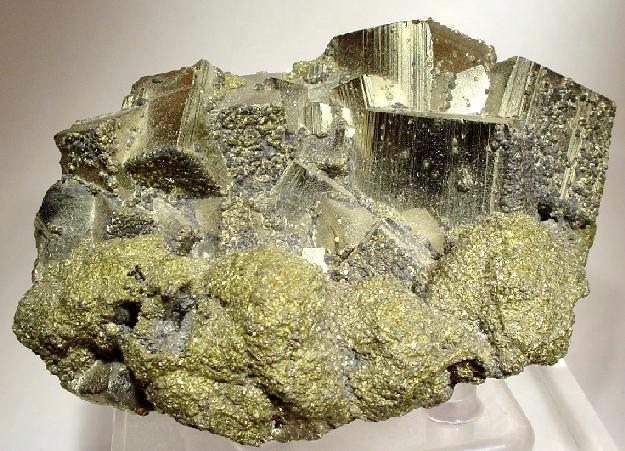In the vast and diverse world of minerals, there are countless specimens that captivate the eye and stimulate the mind. Among these, the black and shiny minerals hold a unique allure, their dark, lustrous surfaces often concealing a wealth of geological and historical information. This article aims to delve into the enigmatic world of these minerals, exploring their formation, properties, and uses.
One of the most well-known black and shiny minerals is Obsidian, a naturally occurring volcanic glass. Formed when felsic lava cools rapidly, Obsidian's glossy surface is a testament to its amorphous structure, which lacks the crystalline formation found in most minerals. Its sharp edges have made it a popular choice for tools and weapons throughout history, while its reflective surface has led to its use in various decorative and ceremonial objects.
Another black and shiny mineral is Hematite, an iron oxide mineral that is often found in sedimentary, metamorphic, and igneous rocks. Its name derives from the Greek word for blood, a nod to the red streak it leaves behind when rubbed against a harder surface. Hematite's metallic luster and high density make it an attractive choice for jewelry, while its high iron content has made it a crucial resource in the production of steel.
Anthracite, a type of hard coal, is another black and shiny mineral. Known for its high carbon content, low impurities, and high energy density, Anthracite is a highly prized resource in the energy industry. Its shiny black appearance is due to its high carbon content and the intense heat and pressure it has undergone during its formation.
Black Tourmaline, also known as Schorl, is a black and shiny mineral that is prized for its piezoelectric properties, which allow it to generate an electric charge under mechanical stress. This property has led to its use in pressure gauges, radio tuning circuits, and other electronic devices.
While these minerals share a common aesthetic, their formation, properties, and uses are as diverse as the geological processes that created them. Understanding these minerals not only provides insights into the Earth's history but also highlights the myriad ways in which these natural resources have been utilized throughout human history.
In conclusion, the world of black and shiny minerals is a fascinating one, filled with a wealth of scientific, historical, and practical knowledge. Whether it's the volcanic glass of Obsidian, the iron-rich Hematite, the energy-dense Anthracite, or the piezoelectric Black Tourmaline, each of these minerals holds a unique place in the mineral kingdom and in our lives.
About Author
You may also like
-
Enhanced Technical Guide to XM-7 Iron-Based Powders for Wear-Resistant and High-Strength Industrial Components
-
Comparing Materials: Glass, Metal, and Polymeric Facade Solar Panels
-
How to Choose High-Performance Engineering Plastics for Modern Industrial Applications
-
How to Use Plastic Additives to Improve Material Performance in Modern Manufacturing
-
Indoor vs. Outdoor EV Chargers: Choosing the Right 7kW Charging Solution for Your Home

